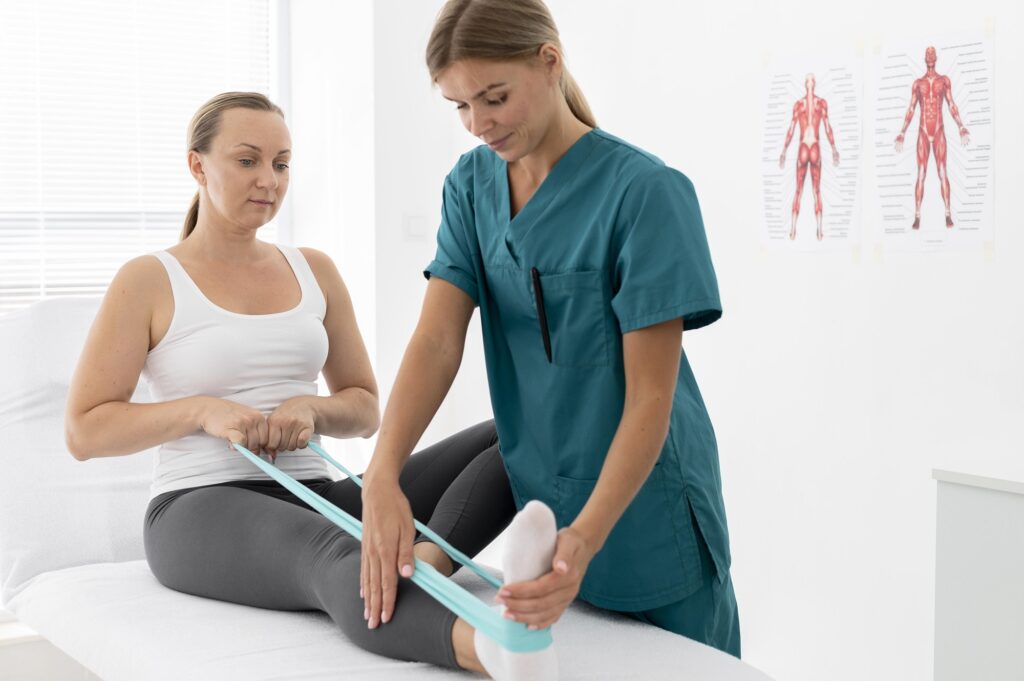Understanding PCOS and its impact on pelvic pain
Polycystic ovary syndrome (PCOS) is a complex hormonal disorder that affects an estimated 5-10% of women of reproductive age worldwide. This condition is characterized by a range of symptoms, including irregular menstrual cycles, excessive hair growth, acne, and weight gain. One of the less discussed, yet debilitating, symptoms of PCOS is pelvic pain.
Pelvic pain is a common experience for many women with PCOS. This discomfort can manifest in various ways, such as sharp, cramping, or dull aches in the lower abdomen, back, or hips. The pain may worsen during menstrual periods, sexual intercourse, or physical activity. In some cases, the pain can be so severe that it interferes with daily activities and negatively impacts a woman’s quality of life.

The underlying causes of PCOS-related pelvic pain are multifaceted. Hormonal imbalances, inflammation, and muscle tension or dysfunction in the pelvic region can all contribute to this type of pain. Additionally, PCOS is often associated with other comorbidities, such as endometriosis, which can further exacerbate pelvic discomfort. Understanding the complex interplay between PCOS and pelvic pain is crucial for developing effective management strategies.
The role of physiotherapy in managing PCOS-related pelvic pain
Physiotherapy has emerged as a valuable and holistic approach for managing PCOS-related pelvic pain. Physiotherapists, also known as physical therapists, are healthcare professionals who specialize in the assessment, diagnosis, and treatment of musculoskeletal and neurological conditions. Their expertise in the pelvic region and its surrounding structures makes them well-equipped to address the unique challenges faced by women with PCOS-related pelvic pain.
One of the primary roles of physiotherapy in managing PCOS-related pelvic pain is to address the underlying musculoskeletal and soft tissue issues that contribute to the discomfort. By identifying and addressing muscle imbalances, joint restrictions, and pelvic floor dysfunction, physiotherapists can help alleviate pain and improve overall pelvic function. This multidimensional approach not only provides relief from the immediate symptoms but also aims to address the root causes of the problem, promoting long-term management and prevention of recurrent pelvic pain.

In addition to addressing the physical aspects of PCOS-related pelvic pain, physiotherapists also play a crucial role in supporting the emotional and psychological well-being of their patients. Chronic pelvic pain can be a significant source of distress and can negatively impact a woman’s mental health, relationships, and overall quality of life. Physiotherapists work closely with their patients to develop personalized treatment plans that address both the physical and emotional aspects of their condition, empowering them to take an active role in their recovery and management of PCOS-related pelvic pain.
Common techniques used in physiotherapy for PCOS-related pelvic pain
Physiotherapists employ a wide range of techniques and interventions to manage PCOS-related pelvic pain. These techniques are tailored to the individual’s specific needs and may include a combination of the following approaches:
Exercise and stretching routines for managing pelvic pain:
One of the cornerstones of physiotherapy for PCOS-related pelvic pain is the implementation of targeted exercise and stretching routines. These exercises are designed to improve the strength, flexibility, and coordination of the muscles and connective tissues in the pelvic region. By strengthening the core and pelvic floor muscles, physiotherapists can help alleviate muscle tension and improve overall pelvic stability, which can in turn reduce pain and discomfort.
Stretching exercises, on the other hand, focus on improving the flexibility of the pelvic muscles, ligaments, and fascia. This can help to reduce muscle tightness and improve range of motion, which can be particularly beneficial for women experiencing pain during sexual intercourse or other physical activities. Physiotherapists work closely with their patients to develop individualized exercise programs that take into account their specific needs, goals, and physical abilities.
Manual therapy techniques for relieving pelvic pain:
In addition to exercise-based interventions, physiotherapists also employ a variety of manual therapy techniques to manage PCOS-related pelvic pain. These techniques involve the use of the therapist’s hands to assess and treat the affected areas, with the goal of reducing pain, improving mobility, and restoring proper function.
One common manual therapy technique used in the management of PCOS-related pelvic pain is soft tissue mobilization. This involves the gentle manipulation of the muscles, fascia, and connective tissues in the pelvic region to release tension, improve blood flow, and reduce pain. Physiotherapists may also use techniques such as joint mobilization, which focuses on restoring proper joint mechanics and range of motion, and trigger point release, which targets specific areas of muscle tension and pain.

The use of manual therapy techniques in physiotherapy can be particularly beneficial for women with PCOS-related pelvic pain, as it allows for a more targeted and personalized approach to treatment. By addressing the specific areas of dysfunction, physiotherapists can help to alleviate pain and improve overall pelvic function, ultimately enhancing the patient’s quality of life.
The importance of pelvic floor muscle training for PCOS patients:
One of the key components of physiotherapy for PCOS-related pelvic pain is the emphasis on pelvic floor muscle training (PFMT). The pelvic floor muscles play a crucial role in supporting the pelvic organs, maintaining continence, and facilitating sexual function. In women with PCOS, pelvic floor dysfunction is a common occurrence, and it can contribute to a range of pelvic health issues, including pain, incontinence, and sexual dysfunction.
Physiotherapists who specialize in pelvic health are trained to assess the function and strength of the pelvic floor muscles. They then work with their patients to develop tailored PFMT programs that aim to improve muscle tone, coordination, and endurance. These exercises may involve a combination of strengthening, relaxation, and coordination techniques, depending on the individual’s specific needs and goals.
The benefits of PFMT for women with PCOS-related pelvic pain are numerous. By strengthening the pelvic floor muscles, patients can experience a reduction in pain, improved bladder and bowel control, and enhanced sexual function. Additionally, PFMT can help to address the underlying muscle imbalances and dysfunction that contribute to pelvic pain, providing a more holistic approach to management.
Lifestyle modifications and ergonomics for reducing pelvic pain:
In addition to the specific physiotherapy techniques mentioned above, physiotherapists also work with their patients to implement lifestyle modifications and ergonomic adjustments to help manage PCOS-related pelvic pain. These interventions aim to address the various factors that can contribute to or exacerbate pelvic discomfort, such as poor posture, sedentary behavior, and stress.
One important aspect of this approach is the incorporation of ergonomic principles into the patient’s daily life. Physiotherapists may provide guidance on proper sitting and standing posture, as well as recommendations for adjusting workstations, chairs, and other furniture to better support the pelvic region. This can help to alleviate pressure and strain on the pelvic area, reducing pain and discomfort.

Lifestyle modifications, such as regular exercise, stress management techniques, and dietary changes, can also play a significant role in managing PCOS-related pelvic pain. Physiotherapists work closely with their patients to develop personalized plans that address these areas, empowering women with PCOS to take an active role in their own health and well-being. By addressing the physical, emotional, and lifestyle factors that contribute to pelvic pain, physiotherapists can help their patients achieve long-term relief and improved quality of life.
Integrating physiotherapy with other treatment options for PCOS
While physiotherapy is a highly effective approach for managing PCOS-related pelvic pain, it is often most beneficial when integrated with other treatment modalities. Physiotherapists work collaboratively with other healthcare professionals, such as gynecologists, endocrinologists, and mental health providers, to ensure a comprehensive and holistic approach to PCOS management.
For example, physiotherapy may be combined with medication management, such as the use of hormonal contraceptives or anti-inflammatory drugs, to address the underlying hormonal imbalances and reduce inflammation that can contribute to pelvic pain. Additionally, physiotherapists may refer patients to specialized pelvic pain clinics or work closely with mental health professionals to address the emotional and psychological aspects of PCOS-related pelvic pain, such as anxiety, depression, and trauma.
By integrating physiotherapy with other evidence-based treatments, healthcare providers can create a tailored and multidisciplinary approach that addresses the unique needs of each individual with PCOS-related pelvic pain. This collaborative effort ensures that patients receive comprehensive care that addresses the physical, emotional, and psychosocial aspects of their condition, ultimately leading to better outcomes and an improved quality of life.
Finding a qualified physiotherapist for PCOS-related pelvic pain

If you are struggling with PCOS-related pelvic pain, it is essential to seek the care of a qualified physiotherapist who specializes in pelvic health. These healthcare professionals have undergone specialized training in the assessment and treatment of pelvic floor dysfunction, musculoskeletal issues, and other conditions that can contribute to pelvic pain.
When searching for a physiotherapist, it is important to look for someone who has experience working with PCOS patients and a deep understanding of the unique challenges they face. Look for physiotherapists who are members of professional organizations, such as the American Physical Therapy Association (APTA) or the International Pelvic Pain Society (IPPS), as these individuals have demonstrated a commitment to ongoing education and the provision of high-quality care.
During your initial consultation, be prepared to discuss your medical history, symptoms, and any treatments or interventions you have already tried. The physiotherapist will then conduct a comprehensive assessment to identify the underlying causes of your pelvic pain and develop a personalized treatment plan. This plan may include a combination of the techniques and interventions discussed throughout this article, as well as ongoing monitoring and adjustments to ensure the best possible outcomes.
Conclusion
PCOS is a complex and multifaceted condition that can have a significant impact on a woman’s physical and emotional well-being. One of the most challenging and disruptive symptoms of PCOS is pelvic pain, which can interfere with daily activities, sexual function, and overall quality of life.
Physiotherapy has emerged as a powerful and holistic approach for managing PCOS-related pelvic pain. By addressing the underlying musculoskeletal and soft tissue issues, as well as the emotional and psychological aspects of the condition, physiotherapists can help women with PCOS regain control over their pelvic health and improve their overall well-being.